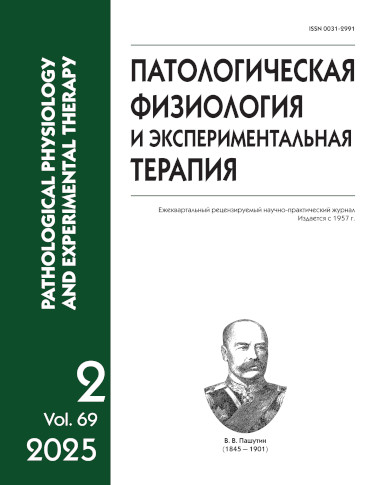The role of matrix metalloproteinases in the development of atherosclerosis
DOI:
https://doi.org/10.48612/pfiet/0031-2991.2025.02.117-126Keywords:
atherosclerosis, ischemic heart disease, coronary atherosclerosis, myocardial infarction, MMPAbstract
The physiological role of matrix metalloproteinases (MMPs) is the regulation of the extracellular matrix. During the development of a number of pathological processes, the secretion of MMPs by mesenchymal cells and immunocompetent cells increases significantly, which consistently causes matrix remodeling. The importance of MMPs is extremely latitudinous and extends to many areas of health care. MMPs are known to be involved in the process of tumor metastasis, therefore, studying their activity can help in the development of new methods for diagnosing and treating malignant neoplasms. Moreover, MMPs are associated with cartilage degradation in osteoarthritis. Their in-hibitors can be used to slow down the progression of the disease. In the aspect of cardiovascular pathology, MMPs attract attention due to their significant participation in vascular wall remodeling. The aim of the study was to clarify the role of MMPs in the pathogenesis of coronary atherosclero-sis based on the analysis of scientific literature with elements of a systematic review. Articles were searched in three online databases (PubMed, Google Scholar, and Cyberleninka). The inclusion criteria were full-text original articles in English and Russian, reports on MMPs in atherosclerosis and/or ischemic heart disease, and clinical trials. The exclusion criteria were conference abstracts, editorials, newsletters, books, and book chapters. Multiple cardiovascular pathologies, including atherosclerosis, largely depend on extracellular matrix turnover. An imbalance between MMPs and their tissue inhibitors leads to proteolytic activity dysregulation and adverse extracellular matrix remodeling, which is associated with the progression and instability of atherosclerotic plaques in the coronary arteries. Increased activity of MMPs, as well as their imbalance with tissue inhibitors of MMPs, results in remodeling of the extracellular matrix, which makes the atherosclerotic plaque more susceptible to rupture. Since excessive tissue remodeling and increased MMP activity are parts of the pathogenesis of atherosclerotic lesions, MMPs remain an attractive target for the development of anti-atherosclerotic drugs.Downloads
Published
2025-06-23
Issue
Section
Reviews
How to Cite
[1]
2025. The role of matrix metalloproteinases in the development of atherosclerosis. Patologicheskaya Fiziologiya i Eksperimental’naya Terapiya (Pathological physiology and experimental therapy). 69, 2 (Jun. 2025), 117–126. DOI:https://doi.org/10.48612/pfiet/0031-2991.2025.02.117-126.






